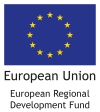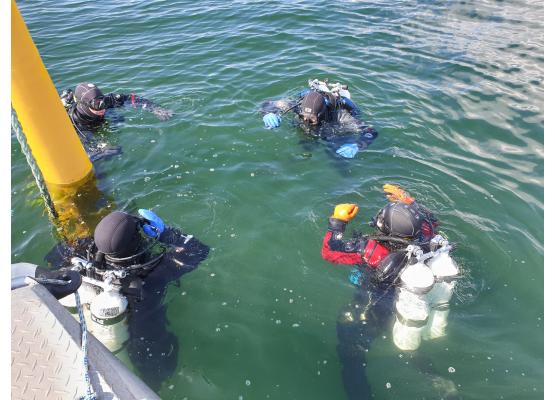In English
The unique cultural underwater heritage
A cold winter night on February 6th, 1709 a fire broke out on a ship in the harbor. The merchant ship Anna-Maria, built in 1694, sank at the quay with cargo and everything. Since then, she has been lying there on the bottom, partially destroyed by the fire. She is 38 meters long and 8 meters wide, and invisible to most people – at least to non-divers.
She is just one of up to 100,000 wrecks found in the Baltic Sea. The cold and brackish water without shipworm preserves the wrecks. Ships that are wrecked in the Baltic Sea can lie at the bottom for hundreds of years, with cargo, masts and maybe cannons, completely unaffected by the passage of time. They are real time capsules, and at the same time a finite resource, for there will be no more 17th century ships. They constitute a unique cultural heritage.
The Baltacar project wants to increase the accessibility to wrecks in the Baltic Sea. In Sweden, they have 3D-documented three wrecks from the 17th and 18th centuries in Dalarö diving park. Anna-Maria is one of them. They have gathered exhibition materials, produced diving trails and digital signs and moored buoys so that visiting ships do not accidentally anchor in the wrecks and destroy them. They have also started training scuba divers to become cultural-historical guides, with the aim of reaching both accustomed divers and culturally interested beginners.
New diving guides
One of the new diving guides is Krister Jonsson.
Krister’s first diving experience was at Malta in 2007, and he experienced a mixture of horror and delight and got stuck. He took a diving certificate in Sweden the same autumn, joined a diving club and eventually became an instructor.
A few years ago, Haninge municipality invited to activities arranged within the project Baltacar. Krister participated and was inspired. Together with three other divers he started a business association to make Dalarö Dive Park accessible to more people.
“Thanks to Baltacar, I took the step”, says Krister.
“There were many good workshops with committed and enthusiastic people. Through participating in the annual diving fair, we got completely new customers. It's about reaching out, and everyone who have been here are happy. The Baltic Sea is considered ‘extreme diving’ - it is cold, dark and poor visibility. A journalist from England said that he had never dived to a real wreck before where the cannons were still on deck, and his visit resulted in several articles.”
“We have several different types of services, both for beginners and experienced, from 5 to 50 meters deep, and we work together to meet customer’s needs. We have a common website where you book a dive – and then it's one of us who drives. It's great fun to convey the story of the wrecks”, says Krister.
He sums up:
“You need entrepreneurs and boats to make a project like this work. I chose to invest in the future, my dream is to be able to live on diving all year round, to make my hobby my livelihood. And demand is increasing. Now my wife and i bought a hostel, so we can offer packages with both boat and accommodation. The best time to dive is autumn-winter-spring. And then we can invest in another type of customers during the summer.”
På svenska
Historien under ytan
Dalarö var den viktigaste tullplatsen för sjötrafik med importgods på väg in till Stockholm sedan 1600-talet. En kall vinternatt 6 februari 1709 bröt det ut en brand på ett fartyg i hamnen. Handelsfartyget Anna-Maria byggt 1694 sjönk vid kajen med last och allt.
Och där har hon legat på bottnen sen dess, delvis förstörd i branden, 38 meter lång och 8 meter bred, osynlig för de flesta, för alla som inte är dykare.
Det finns upp till 100 000 vrak i Östersjön. Det kalla och bräckta vatten utan skeppsmask gör att vraken bevaras. Fartyg som förlist i Östersjön kan bli stående på botten i hundratals år, med last och master och kanske kanoner, helt opåverkade av tidens gång. De är verkliga tidskapslar, men en ändlig resurs. För det kommer inga fler 1600-tals skepp. De utgör ett unikt kulturarv.
Baltacar-projektet ville öka tillgängligheten till vrak i Östersjön. I Sverige har man 3D-dokumenterat tre vrak från 1600-och 1700-talet i Dalarö dykpark, och Anna-Maria är ett. Man har tagit fram utställningsmaterial, dykleder, digitala skyltar över platserna och anlagt förtöjningsbojar, så att besökande fartyg inte i misstag ankrar i vraken och förstör dem. Genom att utbilda sportdykare till kulturhistoriska guider når man både vana dykarna och kulturintresserade nybörjare.
Nya dykguider tar dig med på tur
En av de nya dykguiderna är Krister Jonsson.
Krister dök första gången 2007 på Malta med skräckblandad förtjusning. Han blev fast. Han tog dykcertifikat i Sverige samma höst, gick med i en dykklubb och utbildade sig småningom till instruktör.
För några år sedan bjöd Haninge kommun in till aktiviteter arrangerade av projektet. Krister deltog och blev inspirerad. Tillsammans med tre andra dykare startade han en företagarförening för att göra Dalarö Dykpark tillgänglig för fler.
- Tack vare Baltacar-projektet tog jag steget, berättar Krister.
- Det var många bra workshopar med engagerade och entusiastiska personer. Genom att delta i den årliga dykmässan fick vi helt nya kunder. Det gäller att nå ut, och alla som har varit här är nöjda. Östersjön bedöms som ”extremdykning”: det är kallt, mörkt och dålig sikt. Journalisten Will från England sade att han aldrig hade dykt på ett äkta vrak där kanonerna ännu står på däck, och hans besök resulterade i flera artiklar.
- Vi har flera olika typer av tjänster: både för nybörjare och erfarna, från 5 m till 50 m, och vi samarbetar för att möta kundbehovet. Vi har en gemensam hemsida. Man bokar ett dyk – och så är det någon av oss som kör, förklarar Krister.
- Det är jättekul att förmedla historien om vraken. För att få det att fungera behövs det företagare och båtar. Jag valde att investera för framtiden. Min dröm är att kunna leva på dykning året om, att göra min hobby till mitt levebröd. Och efterfrågan ökar. Nu har min fru och jag köpt ett vandrarhem, så vi kan erbjuda paket med både båt och boende. Den bästa tiden att dyka är höst-vinter-vår. Och då kan vi satsa på en annan typ av kunder under sommaren.




